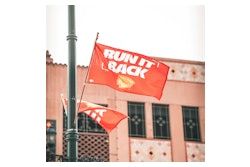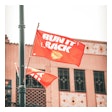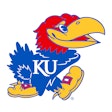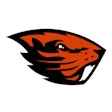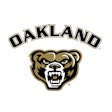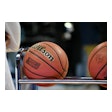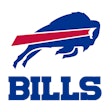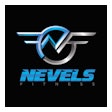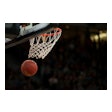Advances in signage technology have made it easier for advertisers to communicate with fans at sporting events, but venue operators must balance sponsorship revenue against spectator revolt.
A year ago this month, Major League Baseball found itself caught in a public-relations rundown. A proposed deal with Columbia Pictures worth a reported $3.6 million called for "Spider-Man 2" movie logos to appear on the bases, pitcher's mound and on-deck circles in every MLB park for three days in June. But as soon as details of the deal went public, fans, club owners and even members of Congress took aim.
Polls showed public opposition to the idea at a 4-to-1 ratio, and the New York Yankees flat-out refused to display the logos during actual games, agreeing only to do so at batting practice. Within days, the entire league-wide promotion was dead. Said MLB commissioner Bud Selig in the aftermath, "The problem in sports marketing, particularly in baseball, is you're always walking a very sensitive line. Nobody loves tradition and history as much as I do.
Not even, apparently, University of North Carolina administrators. As baseball hastily untangled itself from Spidergate, a fledgling UNC task force was taking its first tentative steps toward the widening revenue stream known as facility signage -- one that has long been harnessed by professional teams and more recently collegiate programs, but also one historically avoided by decision-makers on the Chapel Hill campus to the delight of Tarheel traditionalists and collegiate athletics purists everywhere.
Now, faced with the impact of rising tuition costs on their ability to bankroll student-athlete scholarships in 28 sports, UNC athletics officials appear poised to test the waters. In March, the athletic department made formal pitches to sell signage within its men's basketball venue, the Dean Smith Center, courting two prospective sponsors separately on the promise of arena exclusivity in exchange for a target seven-figure commitment. This season, the school even began breaking in the hardware that can help make it all happen -- a high-resolution LED message panel fronting the Smith Center's courtside scorer's table.
How was North Carolina able to identify its own sensitive line regarding facility signage, while Major League Baseball wasn't? The first sales pitch involved Carolina's internal constituents -- trustees, faculty and students. "We communicated to them that we would do it in a tasteful manner," says Norwood Teague, UNC's associate athletic director for marketing and promotions, who estimates the idea ultimately received 80 percent approval from these groups. "We would not have any signage on the playing surface, and it would be minimal as far as the amount of clutter that would be in the Smith Center.
By seeking a single exclusive signage partner, North Carolina clearly has taken clutter control to the extreme. But today's signage technology makes multiple partnerships possible without overwhelming patrons with sponsorship messages. "I equate it to radio in a lot of ways," says Jim Grinstead, editor of the reference guide Revenues From Sports Venues. "Some teams have gone to creating what they call 'moments of presence,' where all the signage in the bowl at a given point turns to one sponsor for X number of seconds or minutes, whatever the deal is. That gives that sponsor a captive audience for its message for that period of time. You eliminate clutter, and that's kind of the radio approach. If you run too many ads, they all lose their effectiveness."
"It's a less-is-more philosophy, where we try not to just inundate our fans with signage anywhere and everywhere," says Jim Allen, senior director of corporate sales for the Atlanta Braves. When the Braves took over signage sales upon moving from Fulton County Stadium to Turner Field in 1997, every effort was made to deliver quality exposures by distancing one sponsor's signage from another's while placing all signs in close proximity to stadium focal points. "Just putting up a sign somewhere doesn't necessarily ensure that people are going to look at it," Allen says. "But if there's a clock next to it, if there's a speed-of-pitch board next to it, if there's line-score information next to it -- those are things that will attract eyeballs to a sign.
This season, the Braves unveiled what even the Guinness people have recognized as the world's largest high-definition video board, an eye-popping 71-by-79-foot screen that Allen says reproduces video so clearly "it's like watching a high-definition plasma screen from 10 feet away. It blew me away." Even so, sponsorship exposure on the board is limited to in-game features, such as the Napa Cap Shuffle and the Home Depot Tool Race. Heavy branding of Napa, Home Depot and any other feature sponsor is handled simultaneously by a new 1,077-foot ribbon board mounted to the fascia of Turner Field's upper deck. The main board itself, called Braves Vision, is flanked by the signage of four longtime Braves partners who (for the time being, at least) are benefiting from the stadium upgrade at no additional cost. And so the Braves have melded the state of the art with what is increasingly viewed as a signage dinosaur -- the static panel.
"Facilities, both indoor and outdoor, are really trying to get away from standard static backlit signage to things that are more dynamic, things that can change and draw attention," says Shawn Bradley, chief operating officer of The Bonham Group Market Research Company, which serves a stable of professional sports teams and collegiate programs from its Englewood, Colo., headquarters. "The issue is going to come down to cost-effectiveness. There are some signage locations in a facility that simply don't attract enough eyeballs to support the kind of financial commitment required by an electronic signage system. Smaller signage appearing in the concourse may rely more on the traditional plastic backlit sign. But in the higher-value positions, I fully expect in the next few years that backlit signage will become extinct."
To some sponsors, static signs offer one advantage over their flashier, more flexible descendents -- the appearance of permanence. "People perceive value differently," says Lawton Logan, senior vice president of sales for Host Communications, a Lexington, Ky.-based sports marketing firm serving the collegiate market. "The animation opportunities are incredible with the LED signs, but some companies see a definite value in the old-line backlit static signage. If you're on a static panel, no one can be on there with you."
Rotational signage represents the next link in the evolutionary chain. It offers sponsors the clarity and color of a static panel, while providing sellers of sponsorships the opportunity to market a facility's prime signage locations (behind home plate in professional ballparks and along the scorer's table in basketball venues, for example) to 20 or more buyers instead of one. A motorized scroll reveals a sequence of different sponsors' logos and messages, which have been digitally printed on a material much like that used as insulating home wrap. This material not only stands up to the rigors of the mechanized scrolling process, but to foul weather and foul tips, too.
Electronic signage takes flexibility to the next level. "The beauty of LED signage is the changeability of it," Allen says. "A partner can come to us the morning of a ballgame and give us new creative for its LED sign that we can put up for that day's game." Electronic signage also offers unparalleled interactivity. A Coca-Cola sponsorship appearing for an entire half-inning on Turner Field's fascia board will feature static branding during live game action and animation between batters. The sponsorship exposure can even be interrupted briefly with Braves content (in the event Chipper Jones hits a home run, for example) before returning to images of Coke. "We sell it by saying, 'There will not be a fan who comes into the stadium who will not see your logo on that ribbon board during the course of the game,' "says Allen. "That interactivity is really what sponsors are buying.
For Bradley, the future lies in LED signage positioned as close to the action as possible. He points to European professional soccer clubs, many of which have replaced the static A-frame signage that once surrounded their fields with rotational signage and, more recently, full-circumference LED boards. He also is keeping an eye on the sports marketing potential of projected signage, which may be used to beam messages onto basketball courts, hockey dasher boards or neutral arena walls during breaks in the action, before disappearing again. "We believe that sponsors benefit from at least some level of uniqueness, so that they are not lost in the clutter, they are not drowned out," Bradley says.
Pricing facility signage involves some obvious considerations, such as the size of the sign and its location within the facility. A sponsor's message appearing on a concourse wall, even if positioned within eyeshot of long lines at concessions stands or rest rooms, typically doesn't carry the hefty price tag of a sign appearing above the tunnel through which players enter and exit the seating bowl.
However, the biggest single boost to a sign's value is television exposure. Turner Field's fascia board may offer more flash than the scrolling signage behind home plate, but it doesn't cost sponsors as much, simply because a much larger audience is exposed to the behind-the-plate signage. "From a TV standpoint, it averages out to about two minutes and 45 seconds per game over the course of the season where their sign is being shown in the background," Allen says.
"Signage really becomes the centerpiece of a sponsorship package if it has a television element to it," adds Bradley. "If it's in a position that will be picked up by television cameras, there's an exponential increase in value."
The UNC Task Force on Signage in Athletic Facilities originally set out to examine sponsorship potential in both the Smith Center and Kenan Stadium, the Tarheels' home football venue. The Smith Center ultimately took precedence, however, largely because of what it could deliver on television. North Carolina officials even used this season to test the new courtside LED board's color and contrast capabilities, to see how certain graphics would play on TV. "Because of television sight lines, we felt the real value for signage would be in the Smith Center," Teague says. "Because of television sight lines for football, it's hard to capture a great deal. So we're going to stick with basketball for now. We'll have around 10 nationally televised games a year, and the remainder of our games are on regional TV throughout a large footprint of the East. The value is there.
The Braves, too, can count on several of their games being picked up by national television in any given season. But Fox Sports or ESPN may have their own plans for Turner Field's prime signage locations. For roughly 10 years now, TV networks have been able to digitally integrate advertising graphics within live game broadcasts, giving the impression to viewers at home that, say, a Pepsi sign appears behind home plate at Turner Field, when in reality it doesn't. In fact, the Braves must cover up their behind-the-plate signage during nationally televised games. "Basically what we're selling sponsors is what we have the ability to sell them, which is the 75 or so games over the course of a season that will give them regional exposure throughout the entire Southeast," says Allen. "We make sure that they're aware that during certain games signage will be blocked out.
Are the Braves compensated by Major League Baseball for this virtual intrusion on Turner Field? Sort of. "At the end of the day, when Major League Baseball gets those rights fees from the Foxes and the ESPNs of the world, we really benefit from that, as do all the clubs," Allen says. "We are, in a way, getting money from that advertising. It's just diluted through Major League Baseball and through the 30 teams equally."
Even quantifying signage revenue within a single organization has become somewhat muddled. Rare is the signage deal these days that isn't tied to a larger sponsorship package. "You have people who are only looking at branding, and so we do have some people who do nothing but signage with us," Allen says. "But the majority of our partners have a much more comprehensive package, where they're not only doing signage, they're doing promotions and community programs with us. They're doing features on our board and giveaways. We try to incorporate as many of those elements that make sense for them."
Adds Grinstead, whose publication covering revenue streams in professional sports no longer includes signage as a line item simply because clubs have so few signage-only deals to report these days, "Even among minor league baseball teams, which have long been the kings of a-la-carte signage, we're seeing a move to broader sponsorship programs."
"They should include pretty much every benefit you have to offer -- particularly to large sponsors -- from signage to TV and radio to hospitality to the Internet," Bradley says, adding, "Signage is usually one of the centerpieces.
Teague, for one, sees signage as "the anchor" of North Carolina's proposed Smith Center partnership, which he says will reach beyond the arena's walls to include the endowment of non-athletic scholarships. "We are pitching a really aggressive comprehensive package," he says. "Our exclusive partner will be integrated into everything we do.
What is it, then, about establishing a presence at sporting events -- via the perceived permanence of a static panel or an animated spot on an LED board -- that remains so appealing to sponsors? Bradley sums it up best when he says, "This is the most avid, rabid fan base that you can get in front of.
In the end, today's facility signage technology has allowed marketers to be more sensitive to the desires of sponsors and spectators alike. "It's really just a matter of strategically planning where your signage is located and what the benefit to the advertiser is for being in that location, and then you've got something viable to sell them," says Grinstead. "You want to pick locations that get in front of as many people as possible. You'll be able to maximize your effort even if you minimize the amount of signage you have in the building."















